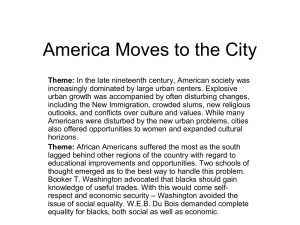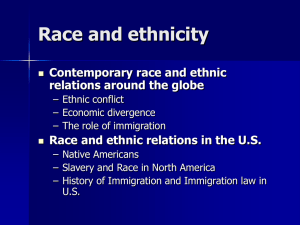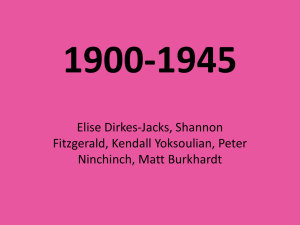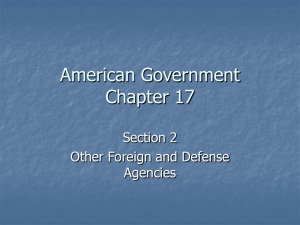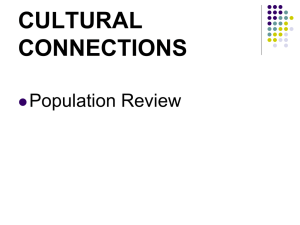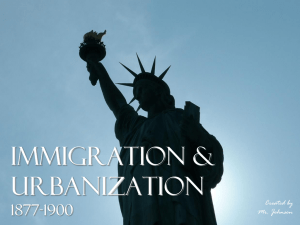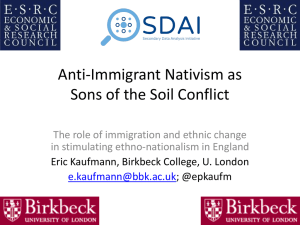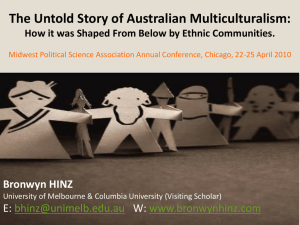Reduce the number of immigrants
advertisement
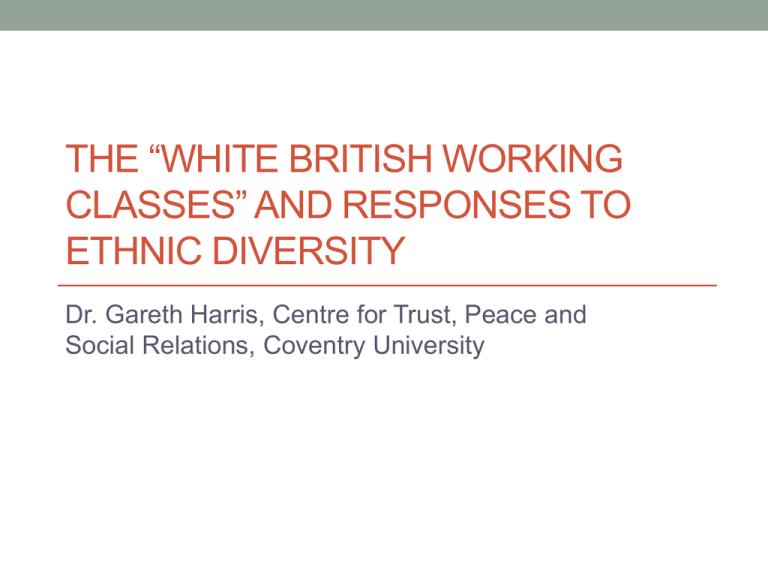
THE “WHITE BRITISH WORKING CLASSES” AND RESPONSES TO ETHNIC DIVERSITY Dr. Gareth Harris, Centre for Trust, Peace and Social Relations, Coventry University Responses to ethnic diversity 1. ESRC-funded project: Exit, Voice and Accommodation: Diversity and the white working class in England and Wales Mixed-methods approach: Quantitative analysis of large-scale govermental datasets (Citizenship Survey, BHPS and Understanding Society) + focus groups. 2. Evolution of anti-Muslim protest in Two English Towns funded by DCLG Case study of two areas, quantitative analysis of survey data + 6 focus groups and 22 interviews in each area. 2 focus groups with EDL supporters. Exit, Voice, Accommodation • Exit = ‘White Flight’ or Avoidance • Voice = White opposition to immigration and/or far right voting • Accommodation = White acceptance of diversity, immigration, ethnic change • ESRC project: How related? White + Working Class. Why? • Ethnic identity more important source of identity for dominant ethnic group members of lower economic status (i.e. Ulster Protestant working class; Oriental Jews; poor ‘redneck’ whites or Afrikaners) – Yiftachel 1999; Roediger 1991 • Research generally finds greater opposition to ethnic change and ethnic equality among working-class whites + support for far right in UK (Goodwin, 2011, 2012; Harris, 2012) • Emergence of white working class in public debate on failure of multiculturalism Opposition to immigration • Public salience • Uses pooled dataset of Citizenship Survey from 2009- 2011 (N= 62145) • Each survey asks the question: 'Do you think the number of immigrants coming to Britain nowadays should be changed?' Answers follow a 5-category ordinal scale: 'increased a lot', 'increased a little', 'stay the same', 'decreased a little,' 'decreased a lot.' • How we talk about immigration and who are we talking about? Not just white British… Percentage of people who would like to reduce levels of immigration, by ethnic group 0 White British White Irish White other Mixed Indian Pakistani Bangladeshi Asian other Caribbean African Black other Chinese Other Total 10 20 30 40 50 60 70 80 90 100 Not just working class…. Percentage of people who would like to reduce levels of immigration, by class and ethnic group 100 90 80 70 60 50 40 30 white British minorities 20 10 0 Reduce the number of immigrants (a lot and a little) by social class and ward diversity for all white respondents in 2007-08/2008-09/2009-10/2010-11 Citizenship Survey 95 90 85 80 75 Upper 70 65 Middle Working class All 60 55 50 Geography matters • At the individual level: the unemployed/social housing • • • • tenants or routine or semi-routine workers, no more or less likely to be opposed to immigration. Respondents who belonged to the lower supervisory/technical groups and identified as English were more likely to want to reduce immigration Respondents living in more deprived areas, no more or less likely to want to reduce immigration Ward-level diversity a positive effect whilst LA diversity negative But change in minority share at ward-level increases the odds of wanting to reduce immigration. Cohesion: anxiety over integration? Tend to disagree and disagree that people from different backgrounds get on well together in neighbourhood Support for Far Right & Populist Right 20 1800 18 1600 16 1400 14 1200 12 1000 BNP av. vote % 10 UKIP av. vote % 800 8 BNP cnds UKIP cnds 600 6 400 4 200 2 0 0 2004 2005 2006 2007 2008 2009 Local election year 2010 2011 2012 2013 Whose voting for the far and populist right? • Opposition to immigration and anxiety over the integration • • • • of minorities united in themes that far and populist right employ to mobilise support At the individual level support for the far right (BNP & NF) was male, stronger amongst lower supervisory, semiroutine and routine workers, and poorly educated. But not social housing tenants or unemployed For UKIP supporters no clear class profile but older and less likely to have degrees. Far and populist supporters share similar attitudinal profile high levels of dissatisfaction with political system and low levels of interpersonal trust. Evolution of anti-Muslim protest groups in two English towns • English Defence League, street-based English nationalist • • • • • movement Predominately working class support base, originally strongly connected to football casual scene Local case studies of two English towns: Blackburn, large Asian heritage pop + highly segregated Luton, majority minority with large Asian heritage pop + ‘super-diverse’ Appeal to EDL within certain sub-sections of the working classes but subject to local context. A working class response? • Opposition to ‘militant Islam’ as coda for wider societal • • • • • • change Vacuum at heart of English nationalism Not just class but interaction between class and local demographic context Resistance to change compounded by feeling that we were never asked-Political disengagement How change is managed? Wider political and media discourse How so responses to change become manifest and which behaviours do we problematize? Lack of General Trust


